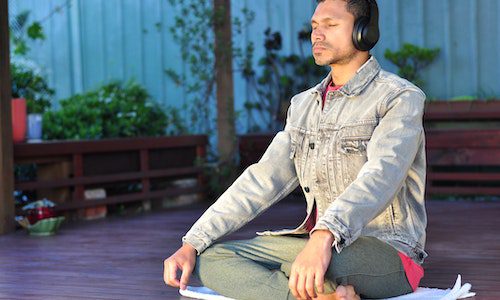Breath and breathing techniques play an essential role in many cultural and religious practices. Breath-centered practices are found in Buddhism, Taoism, Christianity, Shamanism, Hinduism, yoga, qigong, and martial arts. Modern breathwork uses breathing techniques to shift a person’s consciousness for healing, self-discovery, and spiritual purposes.
What is Breathwork?
The Merriam Webster Dictionary defines breathwork as conscious, controlled breathing an individual does for meditation, relaxation, or therapeutic purposes. The term breathwork includes a wide range of breathing exercises that specifically enhance spiritual, physical, and mental health. Psychology, tai chi, yoga, and qigong use breathwork to promote health, healing, and self-awareness. Breathwork therapy helps people struggling with anxiety, depression, PTSD, chronic pain, and grief.
Breathwork and Addiction Recovery
Breathwork is a useful tool for those in recovery from drug or alcohol addiction. Deep breathing helps a person relax. It reduces muscle tension, as more oxygen is sent to the muscles. Breathing affects many essential body functions, and how a person breathes can suppress or enhance those functions. Breathing also affects a person’s emotions and moods, as oxygen levels affect brain chemistry.
Additional health benefits of practicing breathwork include:
- Natural pain relief
- An increase of feel-good chemicals in the brain
- Lower blood pressure
- Better sleep quality
- Increased concentration and focus
- Detoxification
Practicing breathwork leads to increased resilience and an overall improved state of physical and mental health.
Breathwork Techniques
There are many different types of breathwork techniques. Here are four of them as described in WebMD and VeryWell Health.
Deep Breathing
Deep breathing is a simple but effective breathwork technique. You can do it anywhere while sitting, standing, or lying down.
- Make yourself comfortable in a reclined or upright posture that allows the back to be straight and the limbs free (i.e., don’t cross the legs or arms).
- Take a deep, slow breath through the nose.
- Release the air by breathing out through the nose.
- Place one hand on the chest and the other on the belly.
- Focus on feeling the belly rise and lower as you breathe in and out.
- Repeat the process three more times, making sure to take deep, full breaths.
Deep Breathing with Breath Focus
While you practice deep breathing, picture in your mind a phrase or word that helps you feel more relaxed.
- If your eyes are open, close them.
- Take three or four deep breaths.
- As you inhale, imagine the air around you filled with calmness, serenity, and peace. Let your entire body feel the calm.
- As you exhale, imagine the air takes your stress, anxiety, and tensions with it, leaving you feeling peaceful.
- Repeat the imagery while inhaling and exhaling but add a phrase or word to it. Do not say the word aloud. In your mind, say I breathe in calm and peace as you inhale. As you exhale, say in your mind, I breathe out tension and stress.
- Continue the breathwork practice for 10 to 20 minutes.
4-7-8 Breathing
Also called the relaxing breath, the 4-7-8 breathing technique helps you fall asleep easier as it acts on the nervous system as a natural tranquilizer.
- Sit or lie down, making sure your back is straight.
- Place the tip of your tongue on the tissue ridge behind your top front teeth. Keep your tongue there throughout the entire exercise.
- Making a whoosh sound, exhale completely through your mouth.
- Close your mouth
- With your mouth closed, quietly inhale through your nose as you count to four in your mind.
- Hold your breath and count to seven.
- Completely exhale through your mouth, making a whoosh sound as you count to eight.
Mindful Breathing
Mindful breathing helps reduce insomnia and improve sleep. A big part of mindfulness is controlling your breathing.
Focus on something calming, such as your breath, a short prayer, a mantra such as om, or a word such as peace. Repeat your mantra or word either silently or out loud as you inhale and exhale. Let yourself relax. If your mind begins to wander, refocus yourself by inhaling deeply.
Do You Need Help?
If you or a loved one is struggling with a substance use disorder, help is available. Addiction is a treatable, chronic brain disease. Canyon Vista Recovery Center, located in Mesa, Arizona, provides treatment for drug and alcohol addiction. Using a combination of psychiatric, clinical, medical, and holistic approaches, our caring professionals will help you achieve your goal of sobriety. Now is the time to get the help you need. Call us today.











